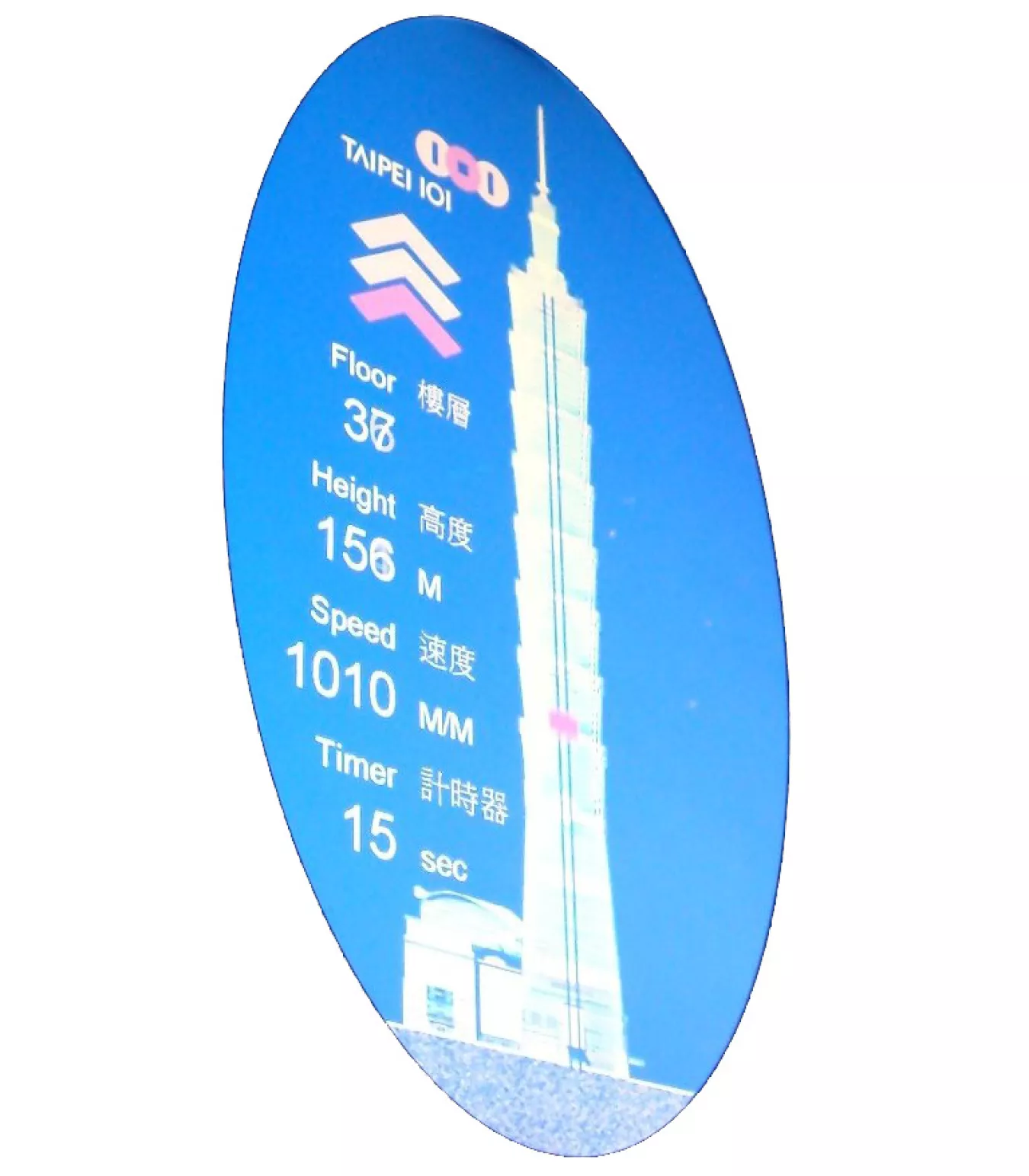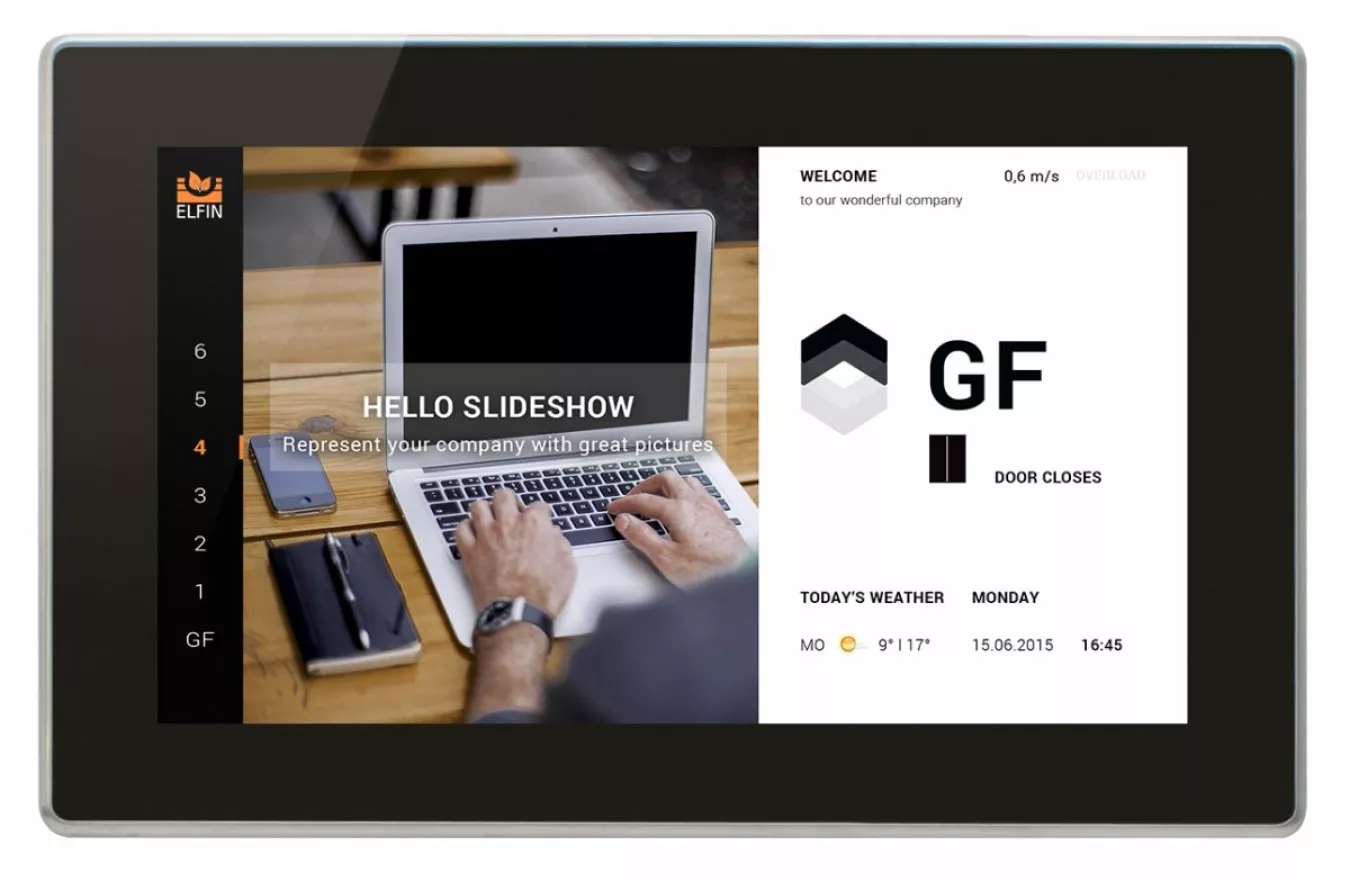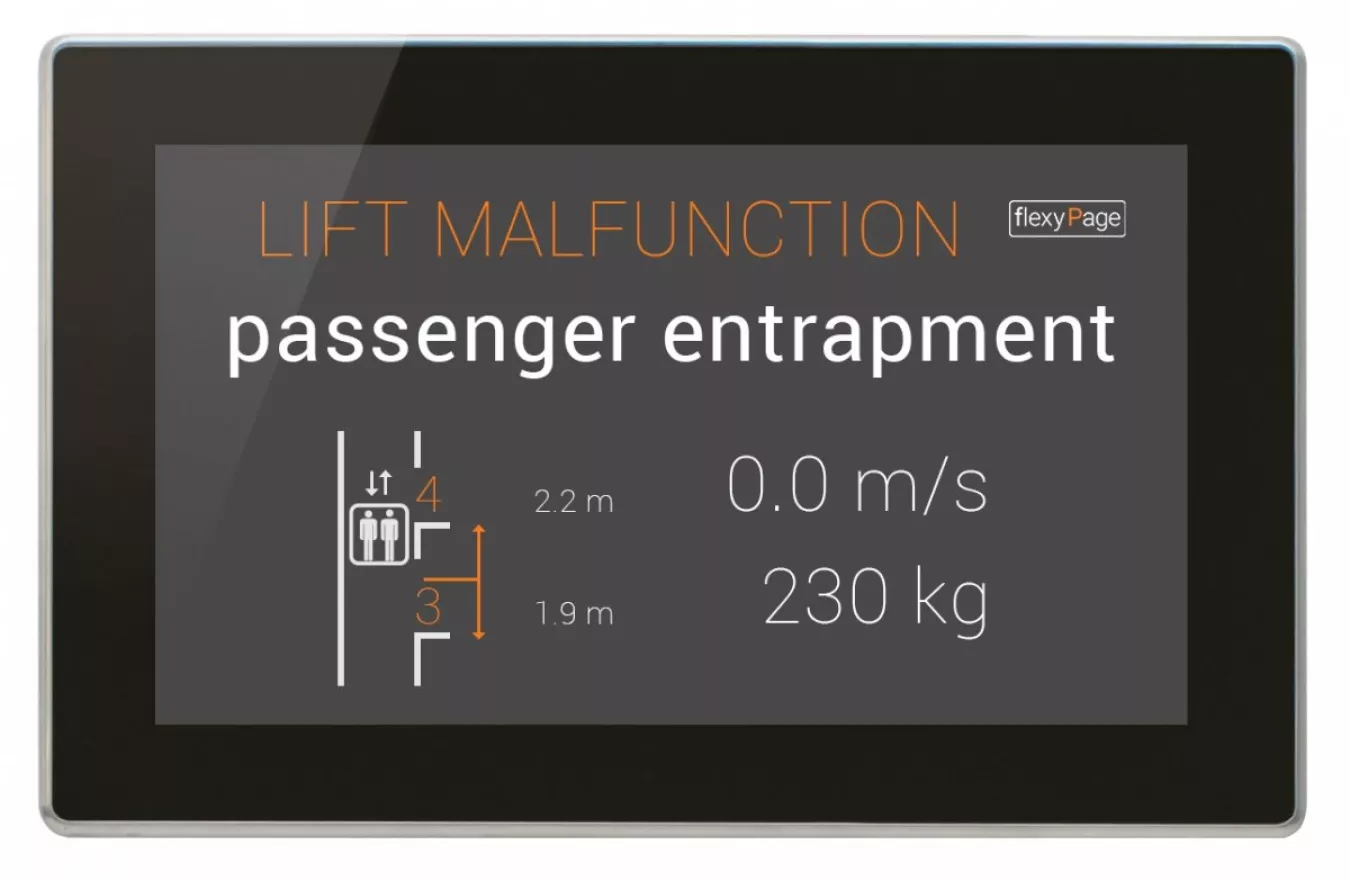Today, sensors for the measurement of the absolute car position are standard features of a modern lift system. The sensors are used to accomplish the lift cabins millimetric hold.
Nevertheless, the resulting sensor data was never visible for the elevator passenger before. So far, information about the lift cabin’s actual position was ’just’ given through a broad floor indication. If a direction indication is displayed as well, the passenger is able to guess the lift cabin’s actual position. Only in case of extremely high buildings, for instance the Taipei 101, the lift cabin’s actual position or speed is graphically visualised or presented as digital value on a display.
Fig. 1: Position and speed illustration in the lift of the Taipei 101 tower.
Today, modern TFT displays are able to provide this feature for any lift. In combination with sensors of contemporary lifts, more new visualisation capabilities arise, which could not be realised with outdated LED indications before.
Often just the simple indication of direction and floor level is necessary. But there are also applications where the precise indication of position and speed is desired. Modern TFT displays offer the possibility to flexibly display measured values in real-time or in case of a certain operating status. Lift users or service technicians can be informed about the lift’s millimetric position inside the cabin or on the several floors.
In the following, some application cases will be clarified.
Fig.2: Combination of floor and position indication. In the top right-hand corner a digital speed indication is shown.
Applications
Position and speed indication
Position and speed indication were formerly known of observation decks and television towers, like the Olympia tower in Munich. They function as gadget, to highlight attractions as a particularly fast lift or the buildings height.
Fig 3: Display of the lift cabin’s actual height and speed in the Olympia tower in Munich. Source: https://youtu.be/jCVXbJ01TUI
Window effect
The so known window effect can be created with the help of huge displays inside the lift cabin, on which videos or 3D animations in relation to position, travel direction and acceleration are screened. Thus, the effect of viewing out of a window occurs. Nevertheless, the video does not have to correspond with the real view out of the building. For example, a simulation showing a journey into space, could offer a new kind of entertaining lift rides. How to realise the window effect application, will be specified in one of the following magazin issues.
The examples mentioned above let suggest, that the interconnection of sensors and displays are only in use for hight-end applications. However, due to the absolute value enconder’s proliferation in standard lifts, sensor data is also available for TFT displays via the standardised bus. This forms the base for many new applications to come.
Warning of steps
Modern TFT displays represent a central element in lift cabins to communicate with the passenger. They are not only able to visualise information for the user, they can provide acoustic signals as well. Therefore, it is non-obvious to use displays also for safety notes. One of the most common causes for accidents involving lifts is the variation in height between the floor and the lift. Such a tiny variation of only a few millimeters can not only present a serious risk in retirement homes. In this cases a ‘mind the step’ notice can provide a complement. This feature can be implemented with flexyPage displays independently from a lift’s controller. Connected with a position sensor, the displays are able to learn the exact floor position. If there is a variation in height between floor and lift, the user can be informed through acoustic and visual warnings.
Fig. 4: Warning “mind the step!” on a lift cabin’s display.
Passenger entrapment
In case of lift malfunction sensor data of modern lifts can be analysed to determine the exact cabin position. More, trapped passengers can be identified. If this is proved to be true, the information can be displayed on a display in the entrance area and support the faster rescue.
Fig. 5: Emergency note “lift malfunction with passenger entrapment” in a buildings entrance area.
New technologies allow a simple realisation
All herein described functions, are only achieved by using bus systems in lifts. The sensor data of all lift components are available via standardised protocols and enable many new features. Together with powerful processors and inexpensive memory modules in modern TFT displays, more comfort and safety functions can be realised. Nevertheless, increased features do also mean a more complex configuration and the configuration used to be a great disappointment in many displays, since the software was not intuitive and update uploadings could only performed on site.
flexyPage displays are an example of what is possible today. Displays can be configured easily through the internet by only using an up-to-date browser. Its functions are provided through widgets, which can be positioned with the help of drag and drop. It is also possible to display them event triggered. Even complex applications can be configured this way in just a few seconds. Currently over 20 widgets for visualisations of several sensor data are available. Examples are indications of position, speed or weight.
Fig. 6: True-to-scale graphical visualisation of shaft and lift position (left) and speed indication pictured as dial instrument in combination with building, lift and internet information.
Abstract
Modern TFT displays in lifts are a visual upgrade and do also entertain the passengers. By evaluating the sensor data and the using event triggered visualisation, many new and useful, optical and acoustic indicators result, which can also increase the passengers safety. It is also noteworthy, that this solution can be easily retrofitted in lifts, since the evaluation of sensor data is made autonomous by the display. More information about flexyPage displays and their application cases, can be read on the product website flexypage.de.
Fig. 7: Example of a position and speed indication, represented as digital value and as true-to-scale graphic.
Lift Report year's issue 42. (2016) magazin 5
Read more articles
- Log in to post comments








